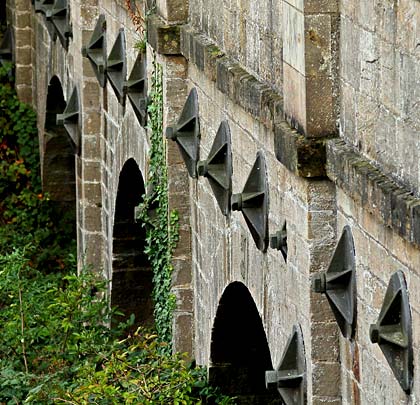King's Mill Viaduct
King’s Mill Viaduct


















In 1817, the Mansfield & Pinxton became the first railway in the East Midlands to be incorporated by Act of Parliament. Costing less than £25,000 to build, it opened on 13th April 1819 to transport stone and lime from Mansfield to the head of the Cromford Canal’s Pinxton branch. Its engineer, Josiah Jessop, adopted the fish-bellied iron edge rails pioneered by his father William. Horses provided to motive power.
The M&P soon also proved its worth carrying coal, facilitating the opening of several new pits for which branches were provided, along with a connection to the Butterley Company’s works at Codnor Park. Indeed coal provided the first consignment on opening day – it being ceremonially burned in Mansfield marketplace. The opening formalities took place on the line’s most notable engineering work, Kings Mill Viaduct, which crosses the River Maun. A local newspaper described it as “the beautiful five-arched bridge, constructed under the direction of Mr Jessop, the engineer.”
The west side of the centre span boasts an 1817 datestone, supporting its claim to be England’s oldest surviving railway viaduct. The structure comprises squared limestone – quarried locally – with ashlar dressing; there is also a string course. The parapets feature masonry copings whilst pilasters provide shape to both elevations. Subsequent repair work has seen the installation of numerous tie bars and pattress plates. The northern end incorporates a curve to the east.
The Mansfield & Pinxton was taken over by the newly-formed Midland Railway in 1847, resulting in some sections of the line being realigned. Alterations were also made to the viaduct, adapting it for locomotives. As a result of the tight curve on its southern approach, a deviation was constructed in 1871 which took the line further south, involving the erection of a new timber structure close to Hermitage Mill. This was rebuilt in stone in 1899.
Although relegated to being host of a siding, the viaduct retained its operational status until 28th November1970. A Grade II listing was bestowed upon it in March 1978. Some restoration work was carried out to the stonework in the early Nineties. A footpath is now carried across its deck.







